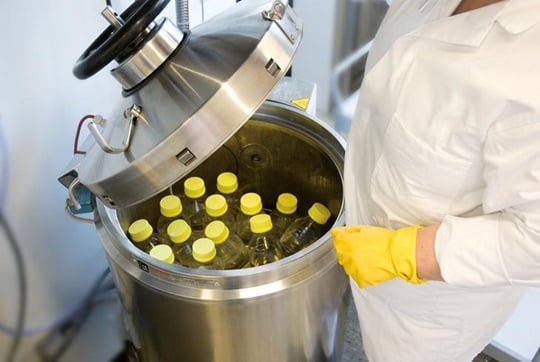Influenza

Sterilisation method involving pressurised moist heat. Autoclaves are primarily used to sterilise medical instruments, surgical linen, swabs, etc. The moisture even removes bacterial spores that are more resistant to dry heat (see also Hot air sterilisation).
To ensure proper sterilisation, the interior of the autoclave needs to be de-aired in the first programme phase: Steam rises and displaces the cold air until the entire interior is filled with steam. After de-airing, a valve seals the interior to obtain the selected lethal temperature. During the subsequent equalisation time, the goods to be sterilised achieve the necessary temperature. The duration of the following sterilisation phase depends on the temperature, type of autoclave and the microorganisms to be killed. This sterilisation method has been proven to be highly effective, even against heat-resistant bacterial spores. Autoclaving is often used in hospitals, not least because of the procedure's ease of validation. Parameters frequently selected are: 134 °C / 5 minutes and 121 °C / 20 minutes.
